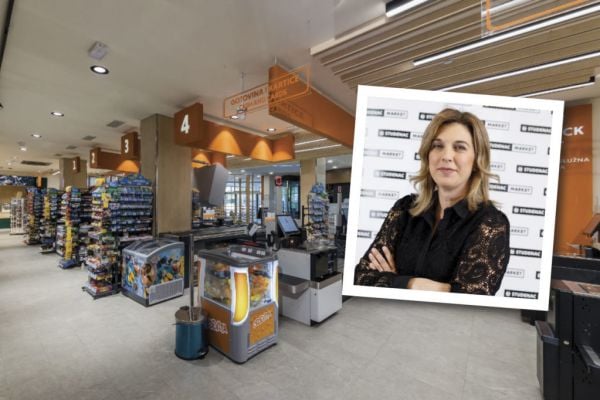Nick Peksa, managing director at Cost Insights Limited, examines how the fate of the raw materials industry in 2018 could be settled by the bounce of a ball - in, or out? This article previously appeared in ESM Issue 1 2018.
At the time of writing, the Australian Open tennis tournament is in full flow, and an unexpected Brit has stunned the national press by making it through to the semi-finals.
With this in mind, the physics behind how the ball moves makes an excellent analogy for what 2018 may hold for the price of raw materials.
In simple terms, the global economy can be compared to a tennis ball - in 2008, it was firmly dropped from a great height. The ball plummeted to the ground and its energy was dissipated, but fortunately, it bounced back, albeit not very quickly, and not as high as before it was dropped.
As economic momentum was lost, the subsequent bounces have become smaller and smaller.
The Trajectory For 2018
Relating this analogy to the price of raw materials is slightly more difficult. Of course the global economy will affect the supply and demand aspect of the raw materials markets, however, price movements over the last two years have moved for very different reasons.
In 2016, the price of crude oil had hit the bottom of the barrel, fresh product supplies (fruit, fish and dairy) were plentiful thanks to the Russian trade embargo and a strong El Niño was forecast.
The raw material markets in general were in a trough, so they started to climb. In 2017, crude oil continued its recovery, the dollar strengthened and interest rates were increased in the US, which led to rate rises in other parts of the world and stimulated exports.
Trade Growth
The driving force of 2018 will be led by an acceleration of world trade growth, which is growing marginally faster than the world economy.
At the recent Davos World Economic Forum meeting in Switzerland, the global growth forecast was upgraded again, by 0.2% to 3.9% (a seven-year high).
The structural outlook for the dollar looks increasingly weak, however, so global inflation may have bottomed out. These changes have helped with business confidence levels and have directly supported the growth in world trade – primarily being fuelled by the manufacturing sector.
Whilst the majority of this sector will be focused outside of the food industry, the net result will be an increase in the price of primary raw materials like base metals, plastics, and chemicals. This will spur an increased demand for crude oil, ultimately hiking its price.
The net result will lead to an increased cost of production for all food producers; somewhere in the region of 0.7% to 2.0%.
Weather Forecasting
We are currently in a La Nina year, with no global weather extremes expected, in fact it will probably be a neutral year. However, localised weather fronts could still be the nemesis of the farmers of certain commodity crops.
Already a winter storm has struck the Florida citrus industry. After the devastation of Hurricane Irma, which caused $760 million of damage, below-freezing conditions are the last thing the industry wanted to see.
Citrus groves are particularly sensitive to the cold, as frost damages both the plants and the fruit.
The early indication from the futures market is that the outlook is not good and the price of orange juice has consequently moved upwards.
From a previous article, one of the things we learnt about weather was that there is a low percent chance that the weather will be exactly the same two years running.
There are always exceptions to these kind of rules; with the current mild temperatures in Europe, it looks like we might have a drought in Southern Europe. Regrettably, if this is the case, the prognosis for olive oil is not good.
At the same time, European wheat markets have been relaxing in a trough for several years. After multiple years of good harvests, there are ample stocks in the world to prevent any major shocks.
Wheat is vulnerable to poor weather conditions and falling yields. Volatility dictates that the chances of price increases by far outweigh the chances of any further decreases.
Markets To Watch In 2018
World production of sugar in 2017 was very strong and the corresponding world price has plummeted. At the back end of last year, the EU removed its sugar quota system, which has allowed the region to produce a significant surplus.
This will only add additional pressure to an already-squeezed marketplace.
Finally last year, butter prices were lobbed into the stratosphere due to extraordinarily high demand for milk fats. Butter pricing has since normalised, but there is still an insatiable desire for cheese, cream and milk powders. This is currently helping to support the price of milk and we have seen the first round of price increases already happen.
EU milk collections are expected to increase year on year, as the mild weather has allowed for good forage.
We are not out of the woods yet, however, as milk collections in New Zealand are down.
We will have to watch this space to see if there is another European price rally.
Closing Thoughts
In the longer term, the markets are cyclical and they will either go up or down in price (in some cases stay the same), however, right now we have to keep our eye on the ball.
We have talked tennis and physics, so it is worth noting that Newton’s first law states that “Every object will remain at rest or in uniform motion in a straight line unless compelled to change its state by the action of an external force”.
In 2018, will the ball be smashed into the net, or will it be hit out of the court?
For more information, contact [email protected]
© 2018 European Supermarket Magazine – your source for the latest retail news. Article by Nick Peksa. Click subscribe to sign up to ESM: The European Supermarket Magazine.














